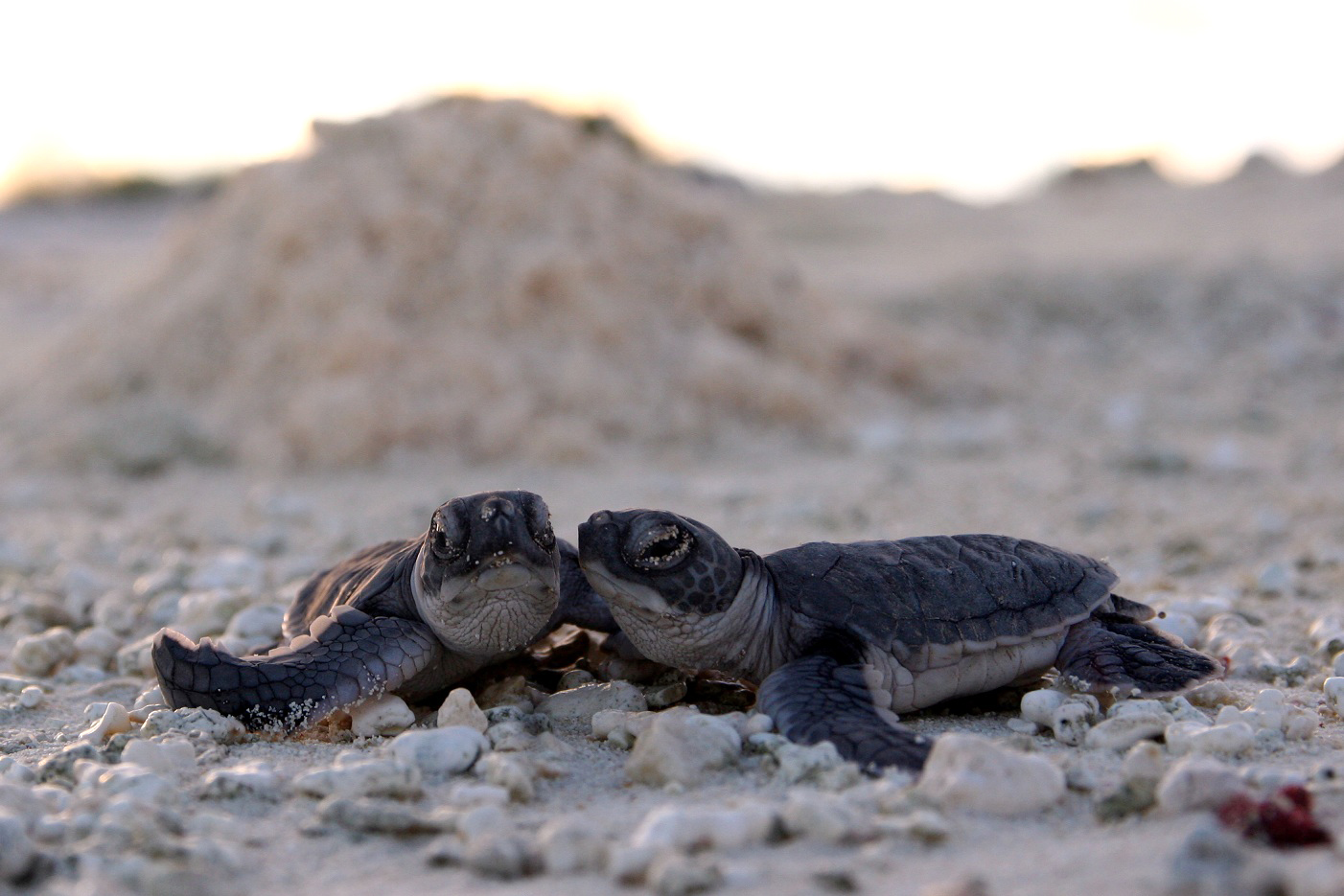
Five Photos That Prove Sea Turtles Are The BFF We All Need
There are seven species of sea turtle that call the world’s ocean home, each with their own unique physical and behavioral characteristics. These turtles are slow moving, charismatic, and one of the world’s favorite sea creatures. But did you know these marine reptiles interact with other animals in some really interesting and fun ways? They make the perfect best friends to so many, and here are five photos that prove it:
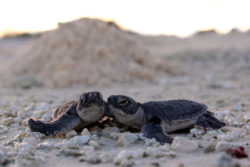
Baby green sea turtles in Papahānaumokuākea Marine National Monument. Photo: Mark Sullivan/NOAA
Sea turtle hatchlings are built-in best friends! They band together from the moment they emerge from their sandy nests. Each individual is quite independent, using the single tooth in their mouths to break open their shells and use their flippers to dig their way out of the sand, making way for other hatchlings to follow. Once emerged, the group of hatchlings, often composed of tens or hundreds of thousands of newborn turtles, head to the ocean to begin their lives. Only a small percentage of turtles will safely make it to the water, and even fewer will survive into adulthood, but taking that first journey together makes their likelihood of success much higher.
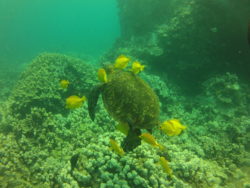
Green sea turtle visiting a cleaning station and getting cleaned by hungry fish in Hawaiian Islands Humpback Whale National Marine Sanctuary. Photo: Mitchell Tartt/NOAA DCIM
Fish are often found swimming near or with sea turtles as they often have a mutualistic relationship. Sea turtles move slowly, giving microorganisms the opportunity to latch onto their shells for a free ride. This can reduce the turtles’ swimming speeds or foster parasitic infections, but fish can help. When turtles approach a reef or other densely populated area, they can stop to rest and allow fish to pick off and eat bacteria, algae, and parasites from their shells, kind of like an oceanic carwash. This “cleaning station” is the foundation for a nice and healthy friendship!
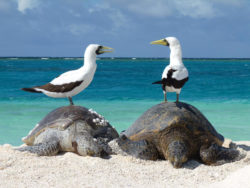
A pair of masked boobies rest on top of two green sea turtles in Papahānaumokuākea Marine National Monument. Photo: Mark Sullivan/NOAA
A fast-flying seabird and slow-walking turtle might seem like an odd duo, but these two have more in common than you think, like, having a favorite resting spot. Seabirds take advantage of the fact that sea turtles spend many hours at the ocean’s surface or on the beach basking in the sun. Seabirds need rest too, especially after a full day of flying and foraging, and turtle shells often make the perfect landing pad. Sometimes you need a pal who is always ready to unwind and relax by the sea!
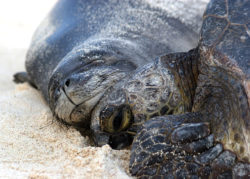
Hawaiian monk seal and green sea turtle cuddle up in the sand at Papahānaumokuākea Marine National Monument. Photo: Mark Sullivan/NOAA
Hawaiian monk seals share the sandy shores of the Hawaiian Islands with sea turtle species. These two iconic animals can often be seen resting near one another — or together! — on the beaches of Papahānaumokuākea Marine National Monument in the northwestern Hawaiian Islands. Beyond being perfect napping partners, these two also share many of the same threats such as entanglement in marine debris and habitat loss. Hawaiian monk seals and all species of sea turtles in US waters are listed as either threatened or endangered under the Endangered Species Act.
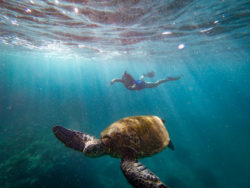
Snorkeler swims behind a sea turtle in Hawaiian Islands Humpback Whale National Marine Sanctuary. Photo: Matt McIntosh/NOAA
It’s no secret humans love sea turtles, whether viewing them on a SCUBA trip, visiting them at a rescue and rehabilitation center, or guarding their nests from harm. We can be better friends to turtles by following proper ocean etiquette, including maintaining a respectful distance and not touching a turtle in the wild, and by protecting turtles and their homes by picking up their trash, supporting policies that protect them, and protecting their homes, including in our national marine sanctuaries.
